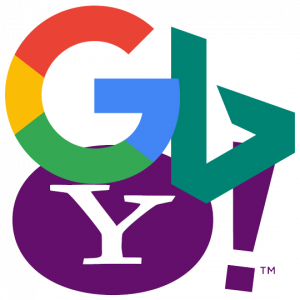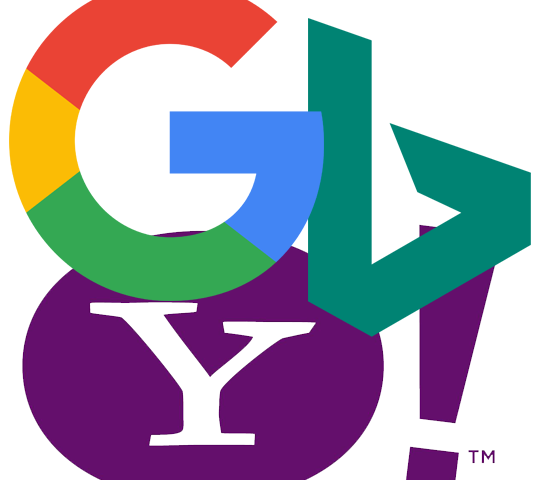print design faq
February 24, 2022
wordpress security
March 1, 2022 Search Engine Optimization, or “SEO” is the process by which someone optimizes their website for search engines. How well a person does, or doesn’t adhere to SEO best practices can make a big difference in where the website shows up in results in search engines like Google, Yahoo, and Bing.
Search Engine Optimization, or “SEO” is the process by which someone optimizes their website for search engines. How well a person does, or doesn’t adhere to SEO best practices can make a big difference in where the website shows up in results in search engines like Google, Yahoo, and Bing.
Back in the day, it was all about meta keywords. You picked as many keywords and phrases as you could think of and stuck them in the meta keyword field in the code of your page. There are still people who try to do it that way now, and have about 100 different keywords and phrases, but that is now considered “keyword spamming” and is a good way to get yourself blacklisted by search engines like Google and Bing.
So, what should you do to optimize your site for search engines? Here are a some rules of thumb, or best practices, for search engine optimization. This is by no means an exhaustive list, but these are definitely things that you’ll want to be implementing on your site to establish yourself, and improve your search engine rankings.
Content
Content really is key. You can have the best titles, and keywords throughout your content, but if your content isn’t content that people are searching for, you’re not going to be found. Period. Write good, useful content. You should ideally have at least 2-3 paragraphs of content on each page. Avoid having pages that are either too long, or too short. Make sure your content is easily readable, and yes, contains certain key words or phrases that you are hoping people will use to find you in search engines, but do it organically, in a way that makes good contextual sense for your page. In other words, don’t write fluff content just to stick keywords in your website. Search engines are not fooled by that.
Have a favicon
As strange as that sounds, that does affect your search engine rankings. A favicon is a small icon that represents your page, is called in your head (along with your CSS files), and appears in the areas like some browser’s tabs, as well as the url/search bar. Because favicon are typically very small (usually around 16 pixels square), I usually try to make them as simple as possible so that users can kind of recognize it as some simplified part of your logo or brand. As you can (hopefully) see mine is my orange lantern.
Use alt, title and description tags for images
This is not only an SEO best practice, but also is an accessibility best practice. These are titles and descriptions of your images that help search engines know what is in an image, and also is used by screen readers for the visually impaired to describe the image to them. The alt and/or title can be a simple title or description, but the description tag should be a little longer and more descriptive, like, “photo of colored paper lanterns during a festival.” Any image on your website should have at least an alt and description tag, and, if you choose, also a title.
Similarly, avoid content in image form
We’ve all seen it – those websites where they have large portions of content or text in a big image. This is a huge no-no. First of all, search engines cannot read that text, so as far as search engines are concerned, that content does not exist. Secondly, that content is not accessible by screen readers, so anyone who is visually impaired will not be able to access that content. A good rule of thumb is to let content be content and images be decoration. Don’t confuse the two. If you must have an infographic or other text intensive image, have the content be there as text, and the infographic available as a download in image or PDF format.
Link to content outside your website, and link back to your website
Did you mention another website or blog? Did you mention an organization or company? Make that text a link to their website, and try to get other websites to do that for you as well. The more legitimate websites link to your content, the higher your rankings will be in the search engine algorithm. Similarly, if there are good, legitimate ways to list yourself online, take advantage of those. Have a LinkedIn page, Facebook page, Twitter account, or other social media presences, and link those profiles to your website. Make sure you keep them up to date, though, and post quality content regularly. For instance, as soon as I finish this blog post, I plan on posting a link to it on my business’ Facebook page. If you have a business, take advantage of the business listing options available through Google, Bing, Yelp, etc. and link those listings to your website. If there’s an organization your business belongs to or is affiliated with, especially one that maintains a directory, have your website listed there, as well, if possible. These are all good ways to get an established presence for your website.
Use title tags for hyperlinks
Whenever you make a hyperlink in your text, you should have a title tag that describes what the link is to.
Use keywords, but don’t rely on the meta keyword field.
While it doesn’t necessarily hurt to have meta keywords in the head of your webpages, that’s really not how it’s done anymore.If you use meta keywords, limit it to just one or two keywords or phrases per page, that are specific to the content of that single page. For instance, if it’s your contact page, you might use your city name. For your home page, you might use a keyword or phrase specific to what your website is about. For a blog page, it might be a keyword or phrase describing the topic of that one post. These keywords or phrases should be used in three places:
- In the content of the page. Pick a keyword or phrase that really gets to the heart of what the content is for that page. For example, if I’m writing a blog article about how to choose WordPress themes, my keyword or phrase might be “WordPress themes”, or “WordPress”, and I will want to make sure that I use that keyword or phrase throughout my content, at least a couple times, and definitely within the first sentence or two
- In the title for the page. Your title should have your website/company name, your keyword or phrase, and the title of the page, if that’s something other than the keyword. Example: “J. Brooke Chao Designs | Blog | How to Pick a WordPress Theme.” This means the meta title of your page, in the code, as well as any header titles, if you use a content management system that has a title field.
- In the url/file namefor the page. Your keyword or phrase should be used in the url of that specific page, and you should use “-” instead of “_” for your word separators, because they are more easily read when underlined. Example: “http://brookechao.com/blog/entry/choosing-wordpress-themes.”
- In the meta description Meta description is still used. This is in the head area of the HTML code for each page, and this is the text that will show up in search engine results for your page. I usually use the first sentence or two from the content of the page, and, again, make sure your keyword or phrase is in that description. It’s kind of a little snippet preview of the page’s content. This should be different for each page – like the title.
Use headers
Every page should have a header of some kind. This will often be accomplished in the HTML through the use of header tags like h1, h2, or h3. These will often be the same as the title of your page.
Have realistic expectations.
Everyone wants to be number one in the search engines. But if you’re a new website, that no one is linking to, have little content, and/or have a very niche audience, you may struggle for a while. Here are some things to keep in mind when looking at your search engine rankings.
- Time – Older, more established websites also using SEO best practices will almost always be ahead of you in search engine results. It can take a while for you to be seen, and recognized as a legitimate website, even if you’d done everything right. Be patient, and in the meantime, make sure your website is following all the best practices on content, keywords, headers, images, etc.
- Don’t confuse SEO with site traffic – You may be doing everything right SEO wise, and you may have been around for years, but you’re still finding that when you look at Google Analytics, you’re not getting much traffic. Well, you may need to consider your subject matter and content. The fact is, you can do everything right, and even be in the top 5 results for people searching for certain keywords and phrase used on your site, BUT, if your website’s content and subject matter is something that only a few people are interested in and search for, you are not going to see much traffic to your site. Have realistic expectations for your audience. In the meantime, while your audience is what your audience is, things that can help this are broadening your subject matter, and blogging on a range of topics not as narrowly focused as just your main subject matter. I’ve mentioned it before, but write lots of interesting, relevant content on subjects you think people will be searching for, within your subject matter. A stagnant website will fall in the search engine results.
- Security – I cannot emphasize this enough…(especially for those of you with WordPress sites!)….make sure you keep your site up to date, and check in regularly to make sure that you haven’t had a security breach. If you’re using a content management system like ExpressionEngine or WordPress, make sure those are kept up to date, and employ plugins like WordFence or VZBadBehavior to prevent security issues. A site that has been compromised by hackers can be used to send out spam, which can result in your site being blacklisted by internet service providers, till they are confident the issue has been addressed. Keeping your site up to date and using security plugins can head those issues off at the pass.
- Beware of SEO scams – Be wary of ANYONE selling you services promising to make you #1 in the search engine rankings. As we’ve illustrated in this article, you can do most anything you need to do yourself, for free. And anyone can do absolutely nothing and make you “#1” in a search engine result, by simply searching for the name or title of your business or website. Boom. You’re #1…except not in any really useful way. After all, only people who know they’re looking specifically for you would search using your business name. You want people to find you based on search terms that will be pertinent to what you’re offering in the way of content on your website. Products. Services. Topics. Real search engine optimization is merely a matter of following best practices, good content, and time. There are no short cuts.
Hopefully these tips will help you in improving your search engine optimization as well as increasing traffic to your site!



